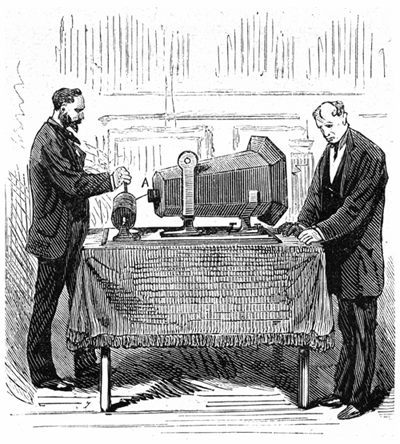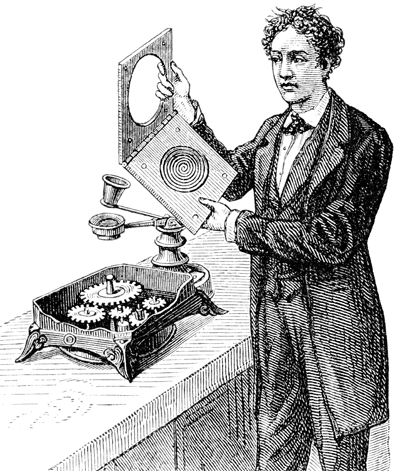
Was Scott’s phonautograph useful and used? Most certainly! The phonautograph made sounds both visible and permanent. It was one of the first instruments to graph natural phenomena, and as such it was used in laboratories and universities for decades. It informed the nascent field of acoustics. If Scott’s phonautograph was so significant, why was it essentially forgotten and only recently remembered? Because technology did not exist to prove it captured the full complexity of the sounds it heard. Only recently have digital technologies made this possible. Hearing Scott’s voice makes his accomplishments seem more real. 
If Scott was the first to record sound, why is Edison heralded as the inventor of sound recording? Because Edison invented a machine that played back the sounds it recorded! This captured public attention and imagination in ways that writing sounds alone could not. Some say Charles Cros invented sound reproduction. What’s that about? Cros conceived of playing back Scott’s phonautograms weeks before Edison conceived of the phonograph, but he did not produce a working model of his invention. His proposed method was more complicated than Edison’s, and the practicality of his approach was never demonstrated. Could Edison have known of Cros’ proposal to reproduce sound? No. When Edison conceived of the phonograph, Cros’ proposal was in a sealed envelope held in confidence by the French Academy of Sciences. There was no way Edison could have known of it. How did Edison conceive of the phonograph? Initially as a way to time-shift and speed-shift telephone messages, then as a means of capturing airborne sounds directly and playing them back without a telephone as intermediary. Was Scott’s phonautograph the inspiration for the phonograph? No. Edison’s inventive aim was to make recordings that could be played back. Not only was the phonautograph a record-only device, Edison did not believe it recorded sounds accurately enough for his purposes. Do Scott’s accomplishments take anything away from Edison? No. Edison independently discovered sound recording and was the first to play back sound. His phonograph stands as a marvel of 19th century invention, as does Scott’s phonautograph. Continue to The Symposium Go back to Charles Cros: The Paléophone Process [ Return to Who Invented Sound Recording? ] [ Return to The Origins of Sound Recording opening page. ] |
Last updated: July 17, 2017
